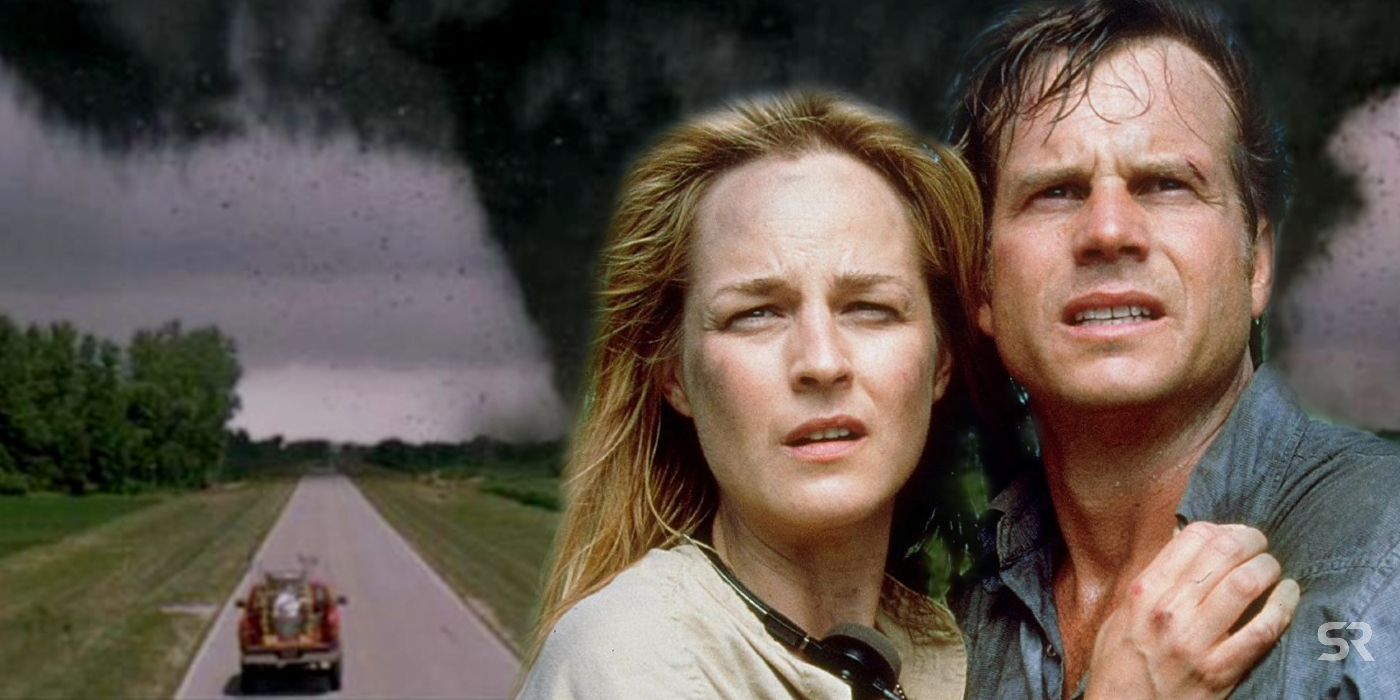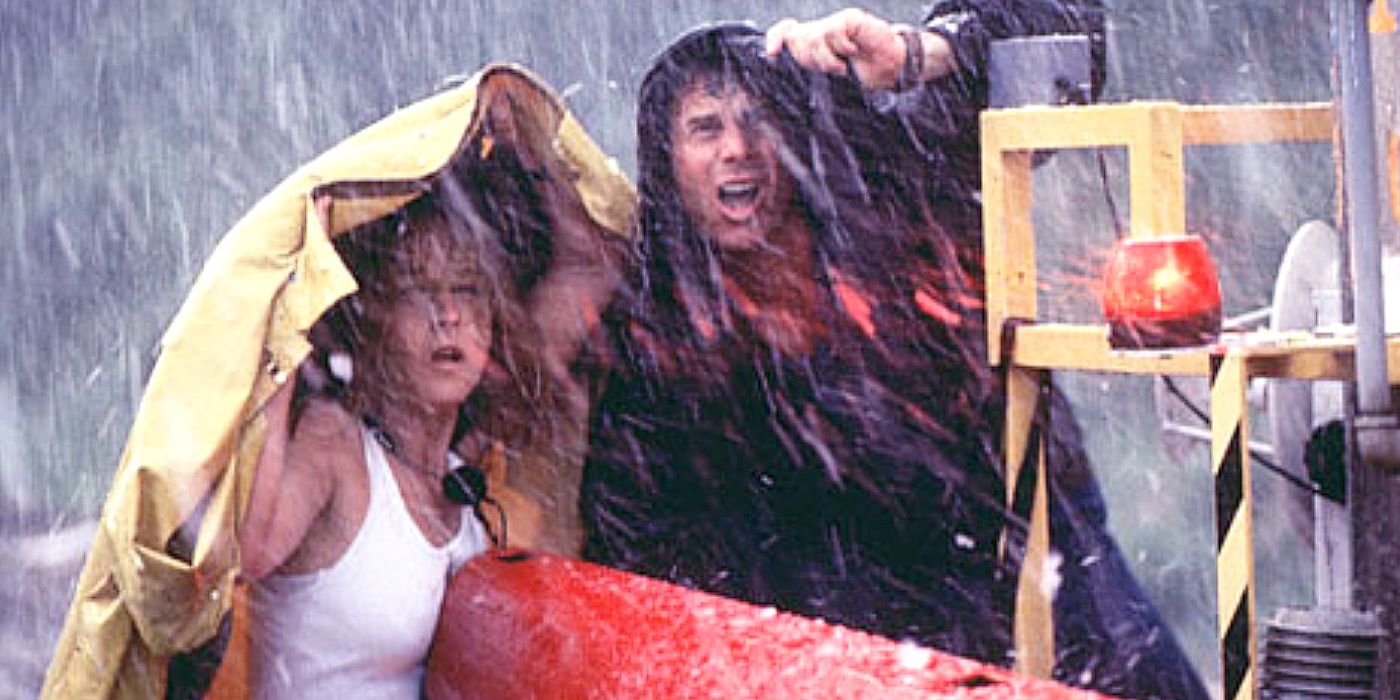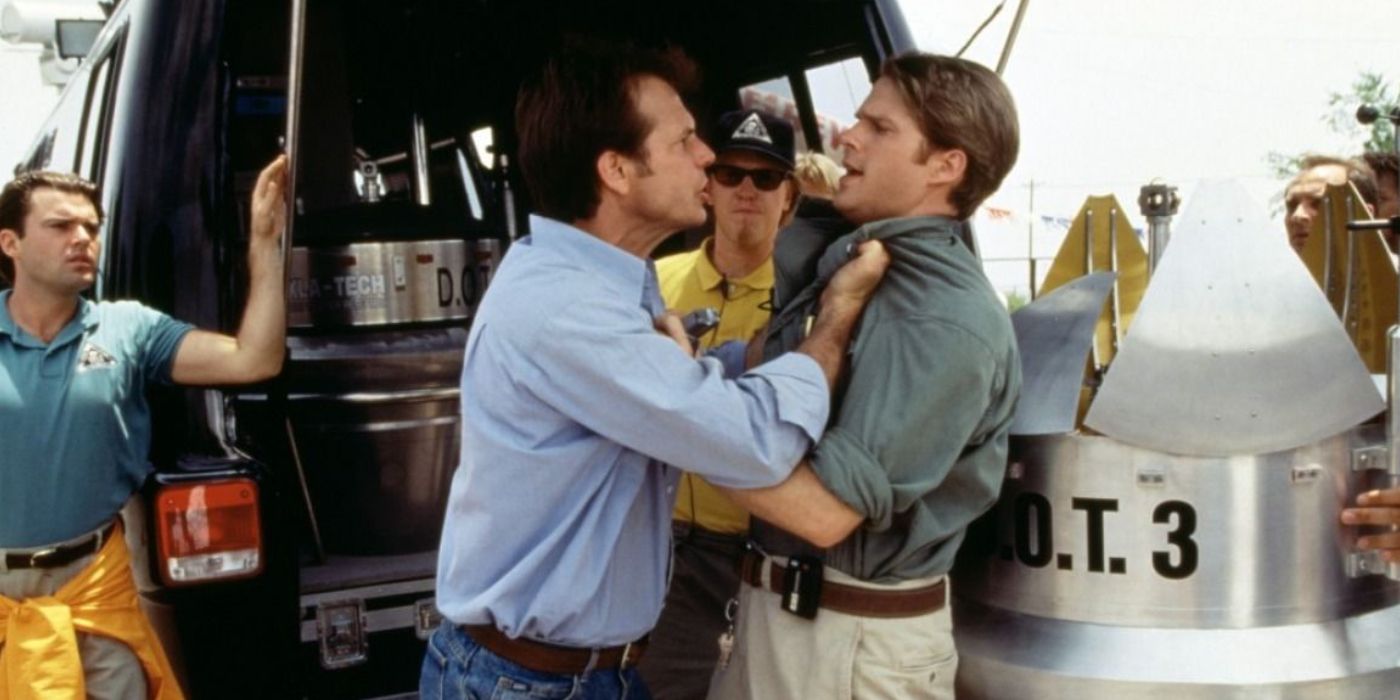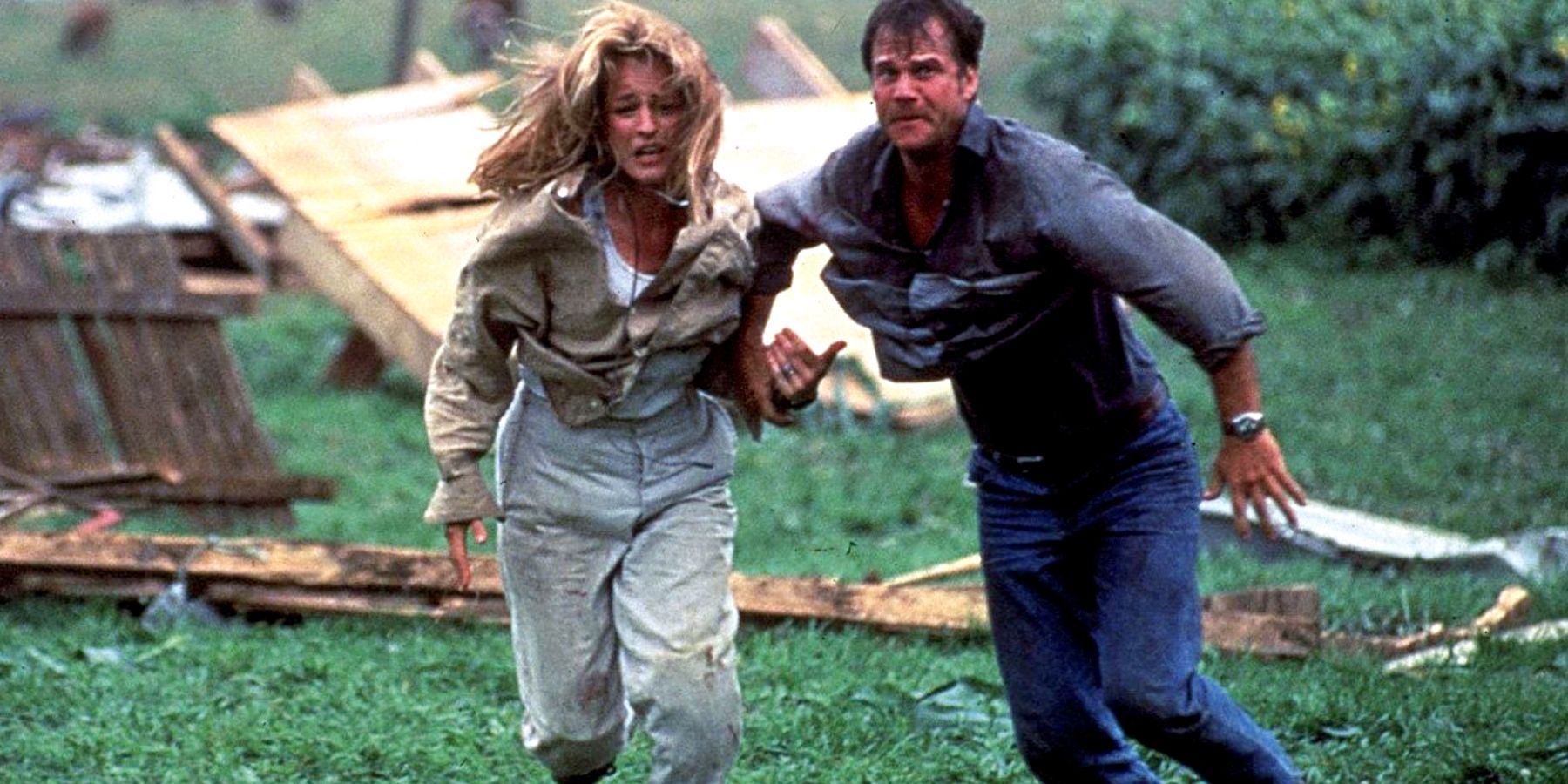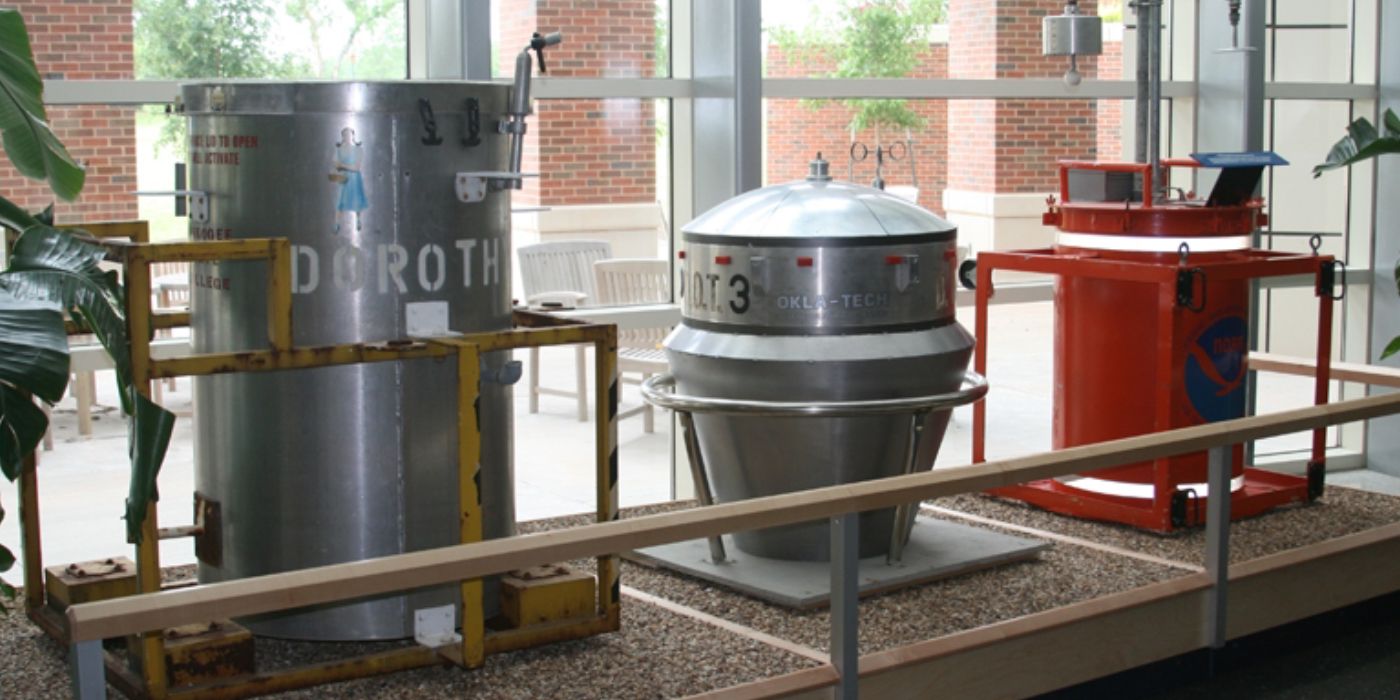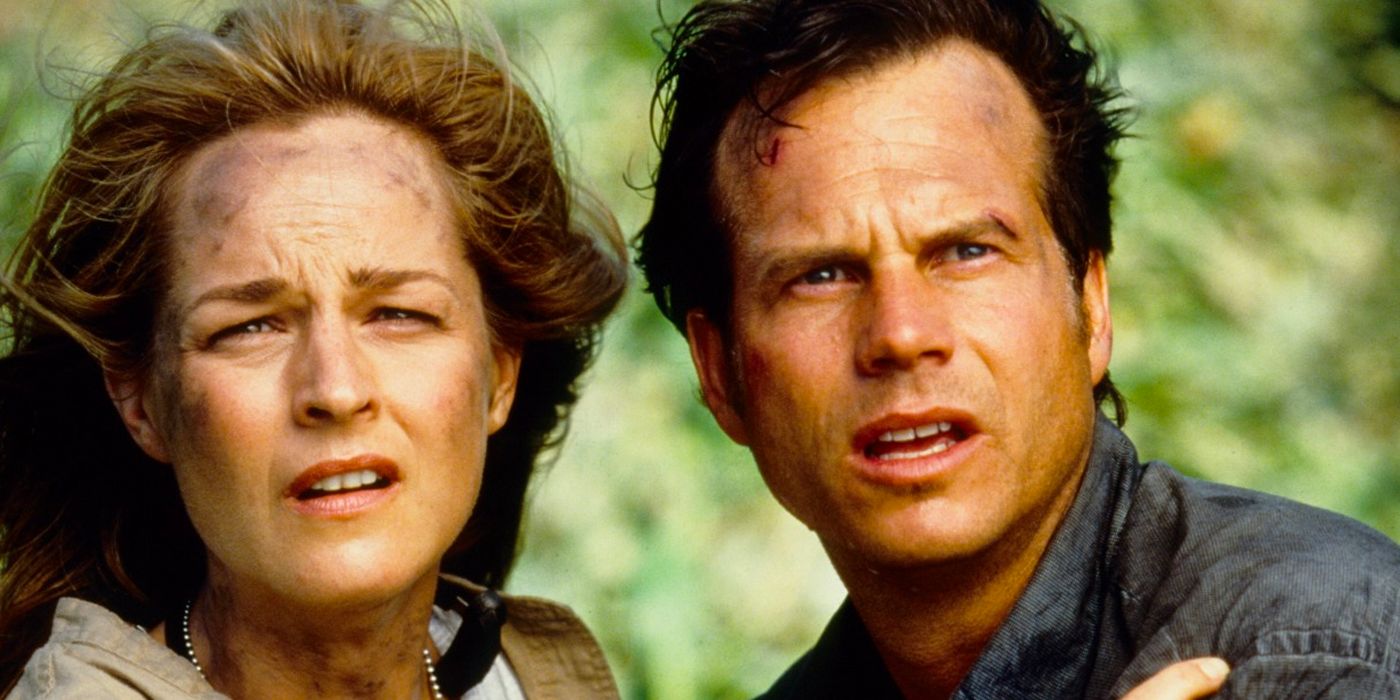Twister is one of the best weather-centric movies ever created but it shouldn't be viewed as pure science. Released in May 1996, the disaster film was directed by Jan de Bont and starred Helen Hunt and Bill Paxton. Despite becoming the second-highest grossing movie of the year (the first being Independence Day), Twister was met with mixed reviews. In the years following the release, Twister went on to emerge as a cult classic.
Twister followed Dr. Joanne "Jo" Harding (Hunt), a meteorologist and storm chaser, and her estranged husband, Bill (Paxton), a former weather researcher who became a TV weatherman. Bill must reunite with Jo to sign their divorce papers so he could get remarried to another woman. Upon their reunion, Bill got caught up with Jo's research during a tornado outbreak in Oklahoma over a 24-hour period. Jo's team was on a mission to test out a new instrument that Bill once designed.
The 1996 movie produced by Steven Spielberg and Kathleen Kennedy formed a lasting legacy since its debut. Due to the ongoing interest, there were numerous rumors of sequels. After years of fabricated talks, Universal Pictures recently announced that a Twister reboot is in development with Joseph Kosinski being considered to direct. But before we can talk about the future of the Twister franchise, let's take a look back at how accurate the original film was.
Is Twister Based On A True Story?
Twister may seem like a work of Hollywood fiction but the mission of the main characters was inspired by real-life scientists. Technically, figures like Jo and Bill were developed for the film, as were the record-breaking weather events that occurred throughout Oklahoma in the plot. That said, scientists from the National Oceanic and Atmospheric Administration (NOAA) influenced Michael Crichton and Anne-Marie Martin when writing the script for Twister.
The NOAA's National Severe Storms Laboratory invented weather instruments to put in the paths of dangerous tornadoes in the hopes of gathering game-changing research. The NSSL team, along with the University of Oklahoma, set out get gather research in the '70s and '80s, but they never obtained a direct hit. To further follow the scientists' journey, the screenwriters, as well as Spielberg and Kennedy, consulted the NOAA and NSSL teams. Cast members spent time with the scientists and even went out on a real tornado chase.
Everything Twister Gets Right About Storm Chasing
Twister realistically depicted quite a bit about real-life storm chasing. The NOAA had a presence in the movie as did the NSSL team. The aforementioned technology and instruments used by Jo and her team were inspired by real methods of storm chasing and research. The satellite, GOES 8, mentioned at the start of the movie was a real satellite used by NOAA from 1994 until 2004. The consultation from scientists also seemed to work since the technical jargon when it came to describing weather events was impressively accurate.
Cary Elwes notably portrayed Dr. Jonas Miller, the leader of a rival storm chasing team in Twister. Much of his presence brought up the debate about scientists working in the field for money rather than the goal of obtaining useful research. This is still an existing element of storm chasing but it was clearly dramatized for the film. The Vane (via Gawker) noted that the final film's tornado, which took out Jonas and some of his team, was eerily similar to a tornado that hit El Reno, Oklahoma, in 2013. It quickly grew to a record 2.6 miles wide before abruptly changing direction, taking many experienced storm chasers by surprise. Three of the chasers were tragically killed in the event.
The Biggest Things Twister Gets Wrong
While there were many aspects of Twister that were accurate, there were also things that were incredibly inaccurate. Although tornadoes can have a clear "eye" in the center of the vortex during the mature stages of the storm, most have multiple vortices. The movie also seemed to insinuate that a green hue in the sky could be a warning that a tornado was on the way, but that isn't always the case. Meteorologists and scientists also can't predict the strength of storms by looking at them. The warning in the opening scene mentioned the possibility of an F5 tornado on the way; the strength and wind speed can't be confirmed until after the tornado makes landfall. Their ranking on the Fujita scale is determined by the amount of damage and track of destruction. However, the problem with the opening scene was also the fact that it took place in 1969 and the Fujita scale wasn't invented until 1971.
There were also issues with some of the safety methods used by characters when tornadoes approached. When the first twister hit, Jo and Bill took refuge under a bridge. This is not an advisable form of protection in a real-life event. A similar instance took place during the drive-in movie theater sequence. The group led the moviegoers into a large hanger but thinly constructed buildings like that should not be used as a shelter as a dangerous storm approaches. Thankfully, tornadoes aren't known to jump back and forth and zig-zag as they were seen doing in the movie so that would be one less thing to worry about in a real-life scenario.
Is Dorothy A Real Device?
One of the biggest aspects of real storm chasing that made the leap from fact to fiction was Twister's research device, Dorothy. The instrument used by Jo, Bill, and the team was directly based on the TOtable Tornado Observatory (TOTO) used by the NOAA and NSSL researchers decades prior. The name, of course, was derived from Dorothy's small dog from The Wizard of Oz. Dorothy was a similarly structured barrel that had the same goal of holding hundreds of sensors that would release inside a tornado, sending data back to the scientists. Unlike TOTO which was never successful, Jo and Bill managed to get deploy Dorothy IV. TOTO was officially retired in 1987 but the device, as well as Dorothy and the rival team's ripoff, D.O.T. 3, are all on display at the National Weather Center in Norman, Oklahoma.
How Twister Changed Real Life Meteorology
Sure, most of the science in Twister wasn't real, but it's important to remember that it wasn't a documentary; it was a source of entertainment. Like the disaster movies before it, Twister set out to tell a story about a group of people who came face-to-face with a force of nature. To make that more exciting, there needed to be a few inaccuracies sprinkled in to add to the suspense. Even with the fictional elements, Twister had a major influence in the world of meteorology and weather research efforts.
Not only did it inspire a new generation of those interested in science and weather, but it also led to a vast increase in enrollment for meteorology programs. John Knox from the University of Georgia once referred to the increase of enrollment as the "Twister Effect." The film also put storm chasers and researchers in the spotlight who were trying to advance science. It brought attention to the field which, in turn, amplified the interest in the study of weather, ramping up research initiatives. The goal is still the same to this day; gather data to better predict tornadoes in the hopes of saving more lives. Real scientists and storm chasers appreciated what Twister did for their field which was why they honored Paxton following his untimely death in 2017. Storm chasers around the country used their GPS trackers to form the letters "BP" as a tribute to the late actor. The legacy continues to live on over two decades later.

